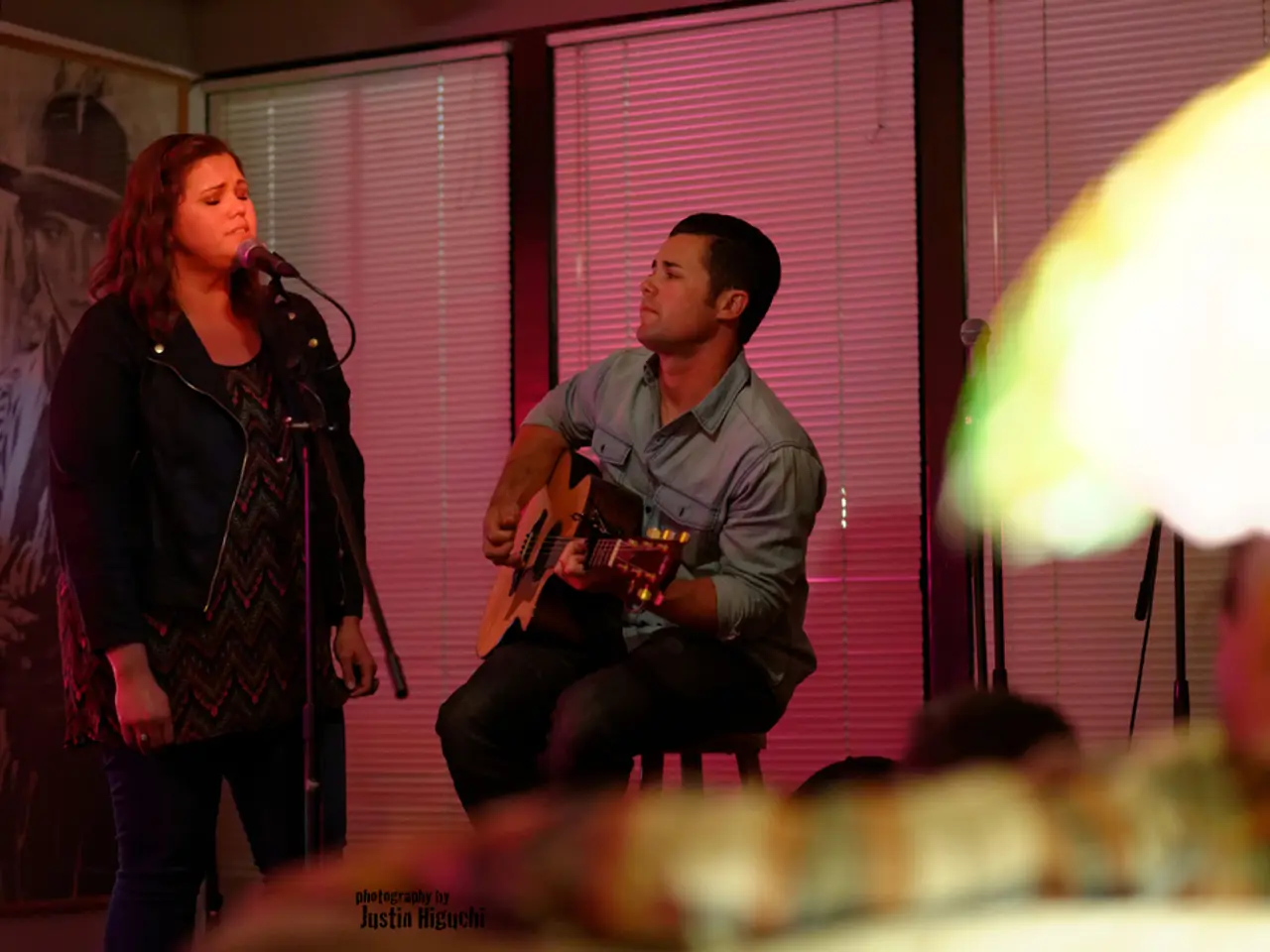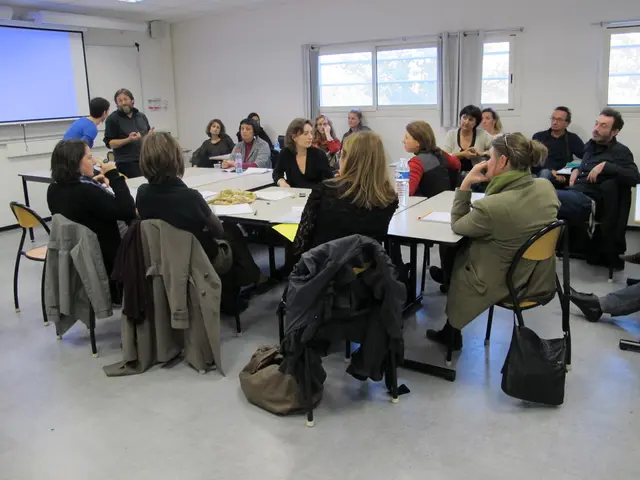Sound Design in movies: Its purpose, notable instances, and why its impact is significant
In the realm of filmmaking, sound design has emerged as a critical element, transforming the way audiences experience movies. From enhancing storytelling to creating immersive experiences, sound designers work alongside directors, composers, editors, foley artists, and other colleagues to bring sound to life.
One of the most iconic examples of innovative sound design is found in Steven Spielberg's Jurassic Park (1993). Led by Gary Rydstrom, the sound design team blended real-world animal recordings with innovative audio techniques to create the terrifying roars of the dinosaurs. This approach brought the prehistoric creatures to life, making the film's audio as memorable as its visuals.
Another groundbreaking example is Francis Ford Coppola's Apocalypse Now (1979). Walter Murch's work on the film perfected the use of surround sound, creating a fully immersive auditory experience that was a significant leap in sound design at the time. The immersive sound environment contributed to the film's intense and chaotic atmosphere, enhancing the overall cinematic experience.
Innovation in sound design has also been showcased in modern adaptations of classic films. The Wizard of Oz at Sphere utilizes advanced sound mixing techniques, infrasound, and haptic seat technology to create a unique and engaging way for audiences to experience the beloved tale. This integration of sensory feedback through sound and vibration adds a new dimension to the film's immersive experience.
Snow White and the Seven Dwarfs, the first full-length animated feature film, is noted for its early use of foley techniques, which added depth and realism to the soundscapes. The use of foley helped establish the foundation for future sound design innovations in film.
Understanding the power and potential of sound design can change how one experiences movies. Sound design can enhance a screenplay by telling a story, adding layers to the scene, and guiding the pacing and rhythm. In pre-production, sound designers use storyboarding, sound maps, and temp tracks to plan the audio elements.
In post-production, sound designers use Digital Audio Workstations (DAWs) like Adobe Audition and Logic Pro, sound libraries, and tools for foley creation. Ambience and atmosphere are subtle background layers that make a setting feel alive, while diegetic sounds exist within the world of the film, like footsteps and door creaks. Non-diegetic sounds come from outside the narrative world, consisting of voiceovers and scores.
The role of a sound designer includes conceptualization, recording and capturing, designing original sounds, sound editing and layering, syncing and blending, mixing and mastering. Aspiring sound designers can learn the craft through schools like Full Sail and online platforms like Coursera, Skillshare, and YouTube.
Innovative sound design continues to push the boundaries of what is possible in audio, as seen in films like Gravity (2013), which used sound design to transmit vibrations through characters' suits and rely on internal and subjective sound. Great examples of sound design in film also include "A Quiet Place" and "Inception".
For virtual reality (VR) and immersive experiences, tools like Dolby Atmos and Dear Reality can enhance positional sounds, further immersing the audience in the film's world. Ben Burtt, the sound designer behind Star Wars' iconic sounds, created the legendary sounds like lightsabers, R2-D2's voice, and Darth Vader's breathing, demonstrating the immense impact sound design can have on a film's success.
In conclusion, innovative sound design plays a crucial role in enhancing storytelling, creating immersive experiences, and pushing the boundaries of what is possible in audio. Whether it's the roar of a T. rex, the chaos of a war, or the quiet moments in a peaceful setting, sound design breathes life into films, making them more engaging and memorable for audiences.
- Pre-production stages of filmmaking, such as storyboarding, are important for sound designers as they plan the audio elements using tools like sound maps and temp tracks.
- In the realm of technology and education-and-self-development, aspiring sound designers can learn the craft through online platforms like Coursera, Skillshare, and YouTube, or schools like Full Sail.
- The lifestyle of a sound designer involves various tasks, ranging from conceptualization to recording, capturing, designing, editing, layering, syncing, blending, mixing, and mastering sounds, not only in films but also in virtual reality (VR) and immersive experiences such as those enhanced by tools like Dolby Atmos and Dear Reality.




